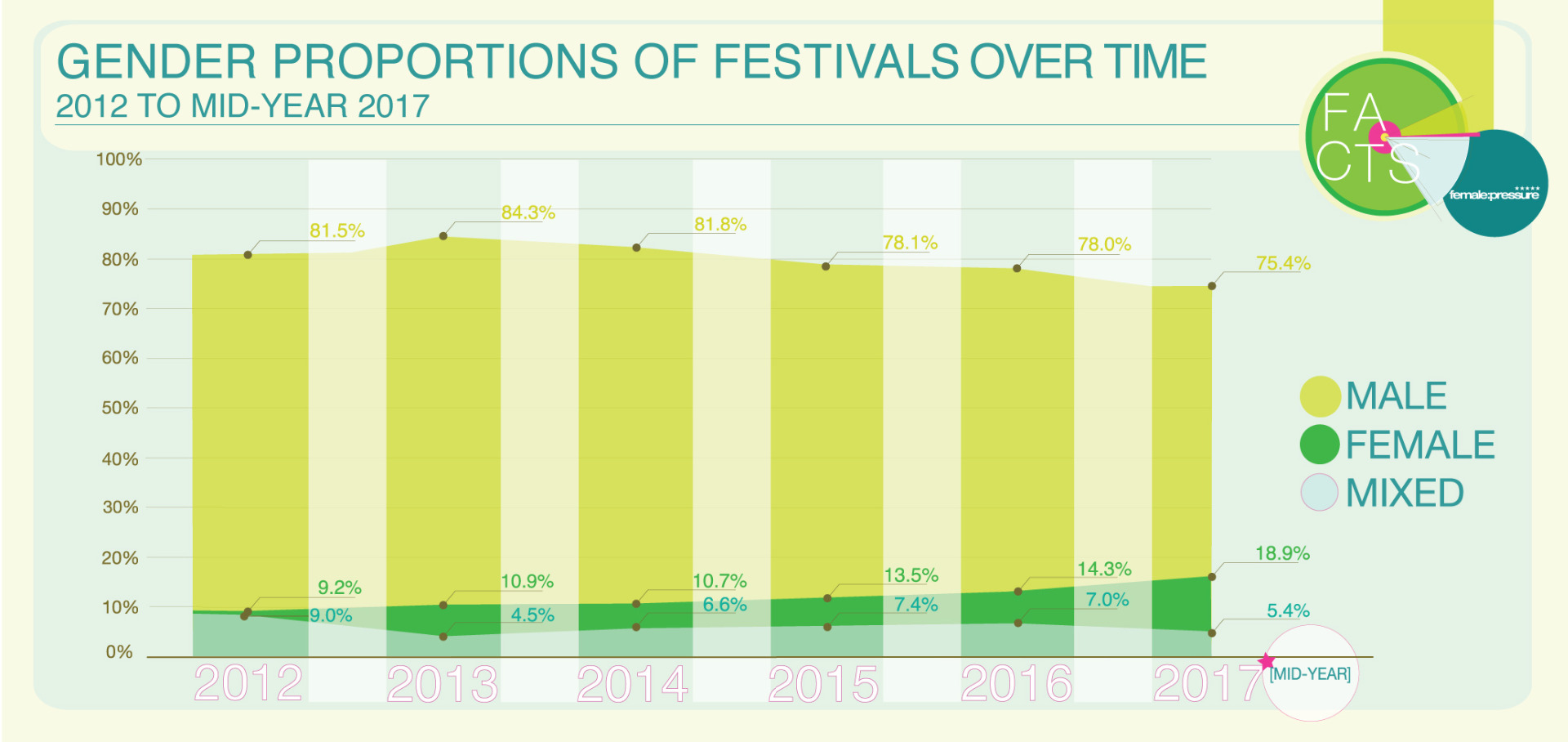The Female Trailblazers : Women in Electronic Music
Posted on 18th June 2019 at 14:00

Electronic music is music that employs electronic and digital musical instruments and circuitry-based music technology. Pure electronic instruments like synthesisers, computers and the theremin have no sound producing mechanisms like strings or hammers, but electronic compositions also include electro-acoustic elements.
A little history
Electronic music began as early as 1913 with Luigi Russolo’s conceptualisation of the genre and development of prototype synthesisers. While the 1920s and 30s saw the introduction of more electronic instruments and compositions for them, historians credit Russolo with redirecting the development of music, redefining what music could be and how it could be produced.
Alongside the liberating emergence of jazz, the ideas in electronic music affected the way technology was uses to mix noise and sound. These concepts subsequently fed through the work of composers like Stockhausen and Cage, and into popular music, making ‘electronic’ one of the single biggest influences on 20th century music.
As the genre developed, artists such as Kraftwerk, Brian Eno, Depeche Mode, Tiësto and Armin Van Buuren have all come to be considered as its pioneers. However, despite its modernity, electronic music seems to share an age-old and anachronistic characteristic with both its classical counterpart and with the tech industries: There’s very little acknowledgement of the contribution of female composers and performers.
In an otherwise fairly thorough discussion of the genre, Wikipedia explains how electronic instruments offered expansions in pitch resources that were exploited by advocates of microtonal music. Examples include Charles Ives, Dimitrios Levidis, Olivier Messiaen and Edgard Varèse. Percy Grainger used the theremin to abandon fixed tonation, and Russian composers such as Gavriil Popov treated the instrument as a source of noise in otherwise-acoustic noise music.
But where are the women?
Improving the profile of women
As in classical music, much has been done in recent decades to redress the balance, and to give a voice to women composers and musicians, and this work continues.
In 1998, Austrian music producer, Techno DJ and feminist, Susanne Kirchmayr aka Electric Indigo (born 1965) launched the web-based database Female:Pressure. Female:Pressure provides an international platform for female DJs, producers and artists involved in electronic music and was created to promote mutual support and communication, and to provide a source of information about artists. The database contains links to all kinds of electronic musicians, ranging from noise, free, electro-acoustic, contemporary new and beat orientated to soundscapes, field recordings and installations.
Female:Pressure has also undertaken three studies (in 2013, 2015, 2017 and with a fourth in 2019) of electronic music festivals around the world. This research looks at numbers regarding gender and clearly demonstrates the disconnect between talent and gender equality. In 2012, only 9.2% of acts performing at festivals were female. By 2017 this had increased to 18.9% – a notable improvement, but nonetheless far short of the 75.4% representing male performers.


As well as Female:Pressure, a number of UK websites are developing and increasing their activities. These include:
This website includes resources such as a lesson plan on the history of women in electronic music
Sounding the Feminists– an Irish-based, voluntary-led collective of composers, sound artists, performers, musicologists, critics, promoters, industry professionals, organisations, and individuals, committed to promoting and publicising the creative work of female musicians.
Symposiums and events are also looking more closely at equality whilst still focusing on electronic music, art, installation work and research. In particular, the research centres at Middlesex and Goldsmiths Universities are doing important work in this area.
Some Great Women Pioneers of Electronic Music
Lituanian-born Clara Rockmore was instrumental in the development of the theremin. Mainly performing on violin and theremin, she worked alongside Léon Theremin. As she had absolute pitch – the ability to identify any note on hearing it- she helped the inventor to refine his instrument for performance use. Rockwell’s recommendations, which translated into actual modifications, included increasing the sensitivity of the pitch antenna and lowering the instrument to make the player more visible.
The German-American pianist, Johanna M. Beyer (1888 – 1944) was the brains behind Music of the Spheres, the first known score written by a female composer entirely for electronic instruments.
Daphne Oram (1925 – 2003) was a British composer who was involved in early experimentation with ‘musique concrete’ – a type a type of music composition that uses recorded sounds such as sounds from nature, the human voice and digitally produced noise as raw material. In this genre, sounds are often altered using audio effects and tape manipulation techniques.
Oram was also the first woman to direct an electronic music studio. She co-founded the BBC’s Radiophonic Workshop Sound Effects Studio with Desmond Briscoe in 1958. And she was the first woman to design and construct an electronic musical instrument.
Wendy Carlos, born in 1939, was one of the earliest composers to promote the use of the synthesiser. Now overused, the instrument initially provided an important step in introducing electronic music to audiences. Carlos’s work can be heard in many popular movie scores including Tron, The Shining, and A Clockwork Orange.
Delia Derbyshire (1937 – 2001) was another British musician and composer who was a pioneer at the BBC’s Radiophonic Workshop. She is most noted for composing the original theme for Dr. Who in 1963 – one of the first tracks ever to be produced entirely using electronic instruments.
Suzanne Ciani (b. 1946) is an American musician, sound designer, composer, and record label executive. Initially trained as a classical pianist, she studied masters in composition, as well as taking evening classes in acoustics, the psychology of acoustics, and computer music. Before she found success as a composer, she spent some time living on the floor of Philip Glass’s basement. In the 1970’s she worked on advertisements for Coca-Cola, Merrill Lynch, AT&T and General Electric. Few people at the time understood what the Buchla synthesiser could do as it lacked a keyboard and this gave her creative freedom. The sound of a bottle of Coca-Cola being opened and poured was one of Ciani’s most widely recognised works and was used in radio and tv commercials in the late 1970s. She continued to pioneer electronic music and in June 2018, Ciani and producer KamranV released LIVE Quadraphonic, a live album documenting her first solo performance on a Buchla synthesiser in 40 years.
Pauline Oliveros (1932-2016) was an American composer and accordionist. She was central to the development of experimental and post-war electronic art music. A founding member of the San Francisco Tape Music Centre, she also served as its director, and taught music at Mills College, the University of California San Diego (UCSD), Oberlin Conservatory of Music, and Rensselaer Polytechnic Institute. Oliveros formulated new music theories, wrote books and explored new ways to focus attention on music including her concepts of “deep listening” and “sonic awareness”.
Other women of note include Éliane Radigue, Laurie Spiegel, Laurel Halo, Maryanne Amacher and Laetitia Sonama. Their achievements are too many to list here.
Musicians current in International Electronic Music by Country:
Ireland: Dr Ann Cleare, a composer using electroacoustics
Belgrade, Serbia: Svetlana Maras, who runs Electronic Studio Radio Belgrade
U.S.:
Germany: Luz Diaz, who runs Room for Resistance, a Berlin-based queer femme forward collective focused on community-building and creating safer space & visibility for underrepresented artists in dance music.
Holland: New Emergences
Further reading:
Wikipedia’s list of female electronic musicians, composers, and sound artists who work in the various genres of electronic music, and the musical groups of which they are members: https://en.wikipedia.org/wiki/List_of_female_electronic_musicians
This blog is written with thanks to Semay Wu for much of the information about the current position of women in electronic music.
Share this post:




